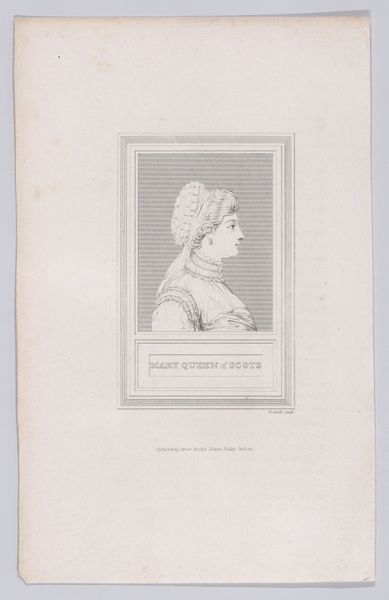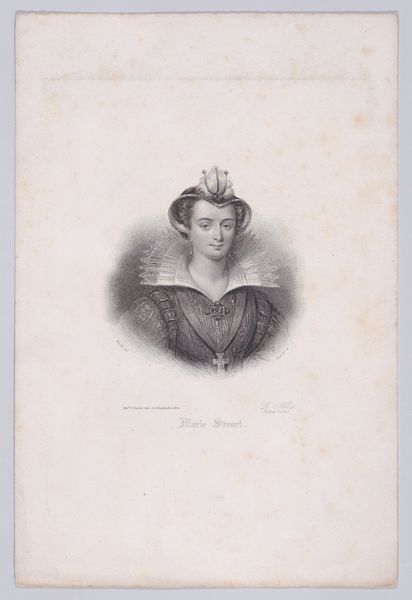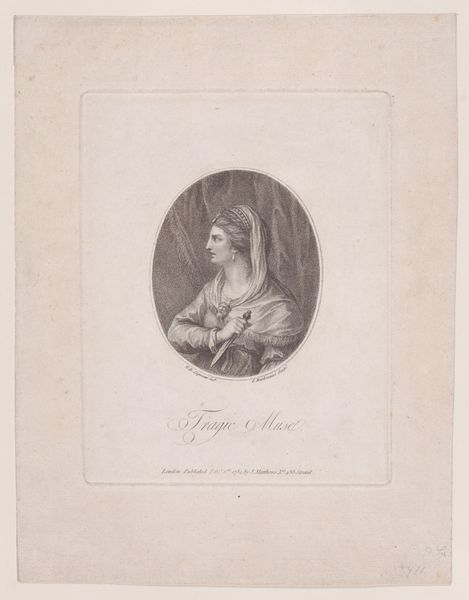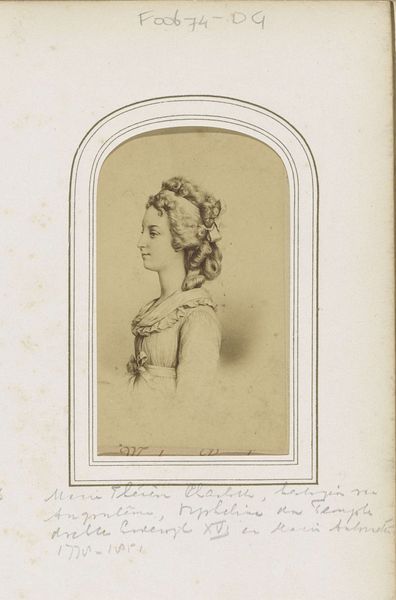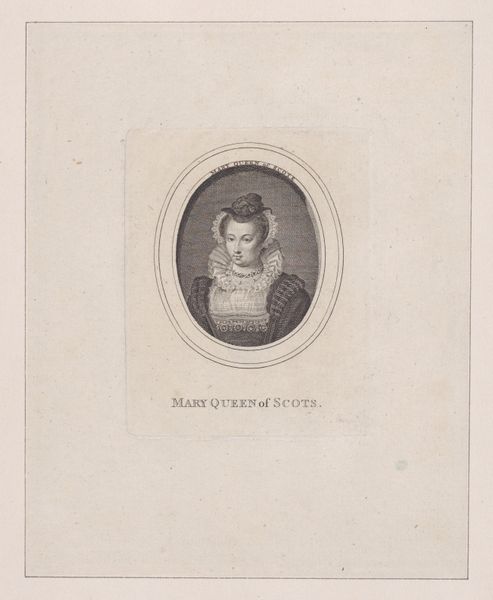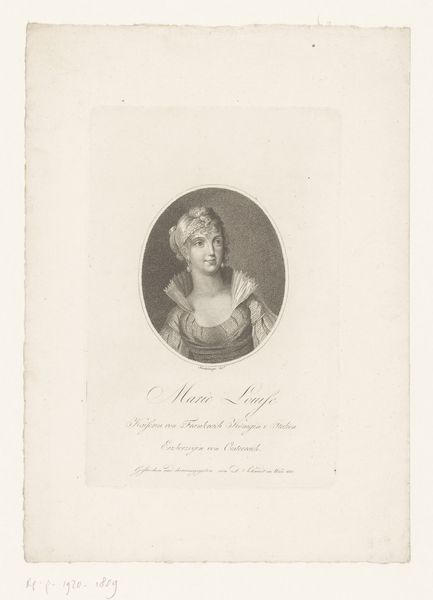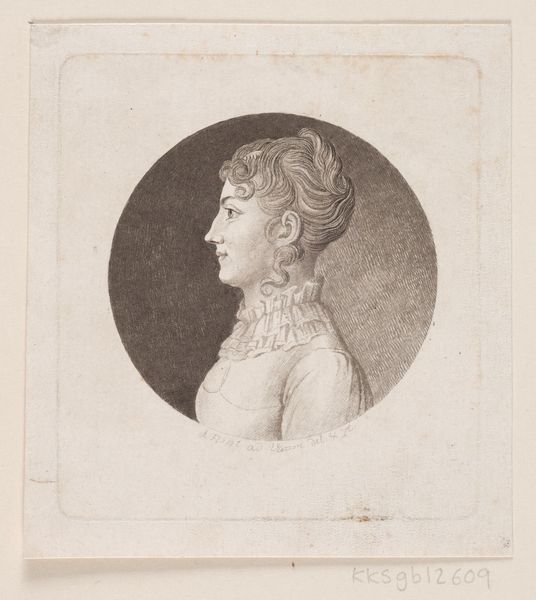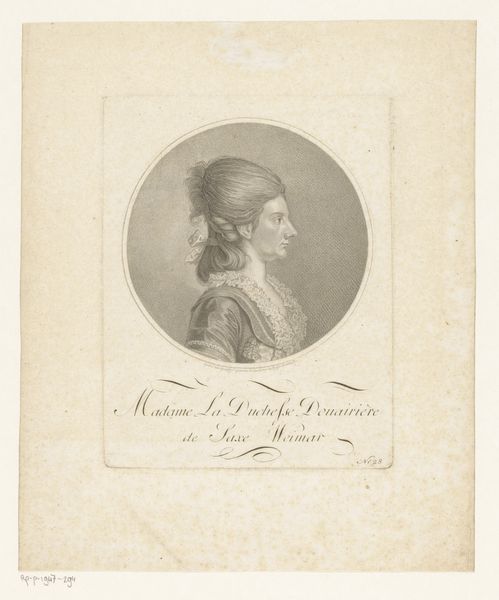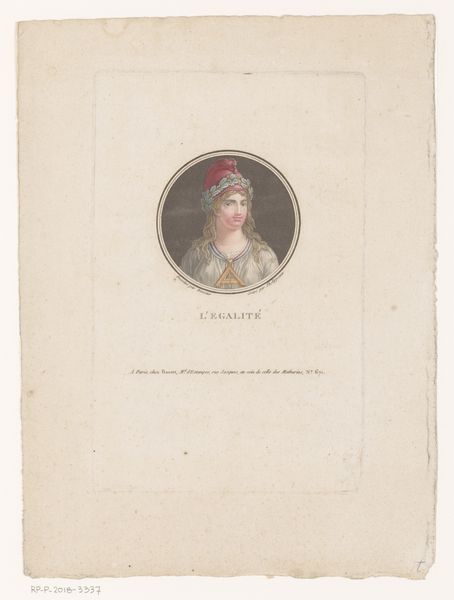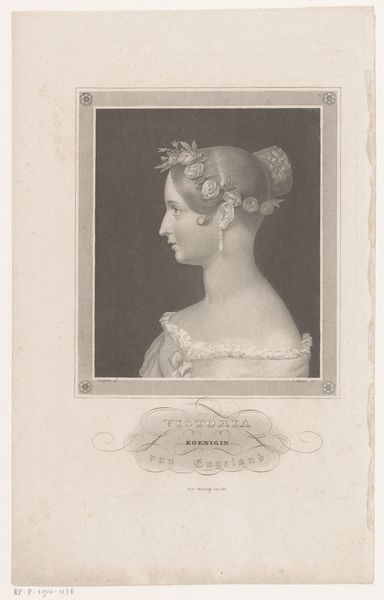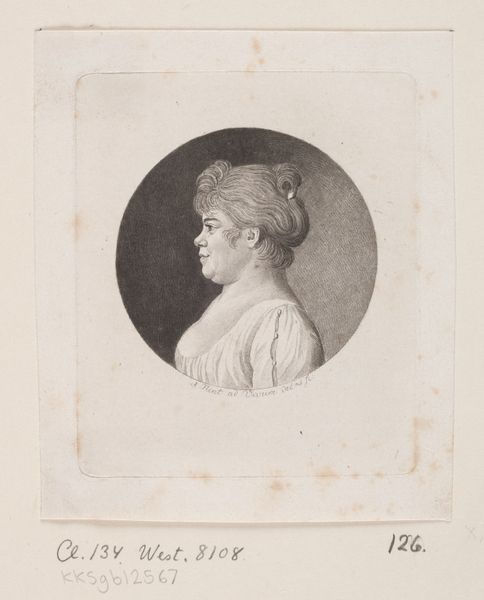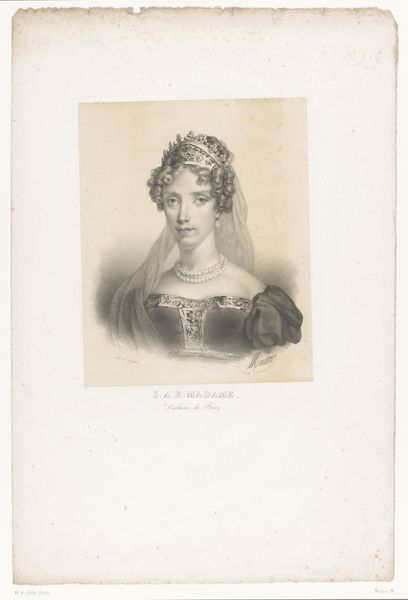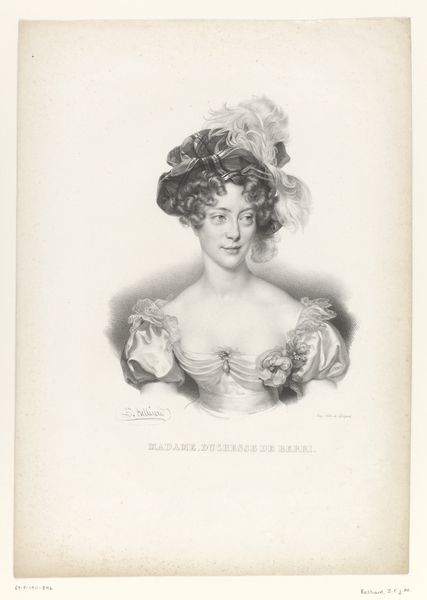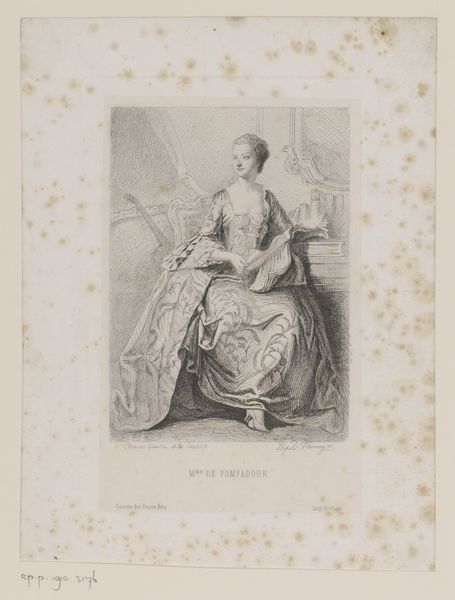
drawing, print, paper, engraving
#
portrait
#
drawing
#
neoclacissism
# print
#
paper
#
history-painting
#
engraving
Dimensions: Sheet: 8 3/8 × 4 7/8 in. (21.3 × 12.4 cm)
Copyright: Public Domain
Curator: This print from 1783, engraved by John Keyse Sherwin, presents a portrait of Mary, Queen of Scots, specifically mentioned as "taken from a silver coin dated 1561." It resides here with us at the Metropolitan Museum of Art. Editor: There’s a somber serenity in the line work. It's austere yet softens the legendary queen, lending her a sympathetic aura rather than simply regal. Curator: Precisely! Sherwin captures that duality beautifully, tapping into a vein of sympathy that started building for Mary during the 18th century. This romantic interpretation is a hallmark of Neoclassical revisiting of history painting, often casting historical figures as subjects of tragic drama. Editor: Looking at the symbolic presentation, even something as simple as framing her portrait within an oval feels significant. An oval often alludes to a contained life, hinting at the queen's ultimate fate. It speaks volumes about her perceived vulnerability in contrast with her formidable status. Curator: You’ve pointed out an interesting perspective on symbolism, her fate being presented through historical interpretation of coinage! But consider the source material: coinage implies authority. The queen's effigy circulated as legal tender. Then, centuries later, it’s re-interpreted in this mournful depiction, filtered through the social memory of her execution. Editor: True, but notice how her gaze avoids meeting the viewer's eye. Is that a symbolic shielding? The gaze and avertedness can symbolize protection of inner thought but the way she avoids eye contact evokes a certain detachment but at the same time it creates some sort of tension for the viewer to know and imagine what she is looking at. Curator: Indeed, there’s also an element of idealization at play. She is stripped of overt political power, softened to highlight feminine virtue. It’s interesting how this reflects societal expectations projected onto a historical icon, the shift from ruler to romantic figure in the cultural consciousness. Editor: I hadn't considered that angle, seeing the tension between coin representation and romantic reimagining. Curator: This particular piece serves as a looking glass, reflecting the cultural mood surrounding historical figures, like Queen Mary, during this era. It demonstrates history reimagined for contemporary sensibilities and agendas. Editor: I see that. The more we talk about this portrait of Mary, Queen of Scots, the more intricate and poignant I see her tragic tale!
Comments
No comments
Be the first to comment and join the conversation on the ultimate creative platform.
